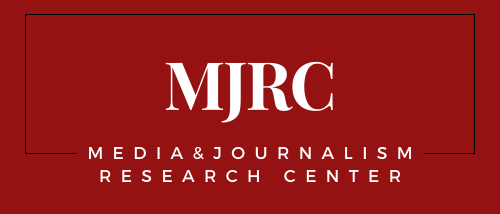Key Findings of State Media Monitor 2024 Published Today
The number of media outlets falling under government control continues to grow, while the independent public media sector is facing new threats.
The government maintains a firm grip on state and public media, with over 84% of the 601 state-administered media companies in 170 countries covered by the State Media Monitor exhibiting a lack of editorial independence. This represents a slight increase of 1% compared to the previous year, according to the latest State Media Monitor findings released today by the Media and Journalism Research Center (MJRC). The inclusion of 13 additional countries in the 2024 State Media Monitor edition has led to the discovery of an even greater extent of government control over state and public media outlets across the globe.
The dominance of government-controlled media is further reinforced when we consider the overall portfolios of assets they hold. Our analysis revealed that the 601 state and public media outlets mapped by the State Media Monitor collectively possess nearly 7,000 media assets, including television and radio channels, print publications, news agencies, and news portals.
In the past year, there has been a noticeable shift towards negative trends in the typology of media outlets across the globe. Out of the 14 media organizations that underwent typology changes in 2024, only two demonstrated improvement. Polska Press in Poland, which was released from government editorial control, and Corporación Estatal de Radio y Televisión (CERTV) in the Dominican Republic, which notably enhanced its editorial coverage, were those exceptions.
Conversely, there have been concerning reversals in editorial independence in various countries. Slovakia’s public broadcaster STVR, previously known as RTVS, has fallen under the influence of the new regime led by Robert Fico. Similarly, Thailand’s Thai PBS has started to yield to government censorship. South Korea’s public broadcaster KBS has faced an unprecedented concentrated attack from the government, indicating an effort to exert control over its governance. A comparable pattern is evident among regional television broadcasters in Spain, with public broadcasters in Catalonia (CCMA), Canaries (RTVC), Aragon (CARTV), and Ceuta (RTVCE) experiencing a loss of editorial independence due to increased control by regional governments.
State Media Monitor is a project of the Media and Journalism Research Center. The 2024 comparative overview covers a total of 170 countries where we mapped 601 state-administered media entities that own nearly 7,000 media assets combined, including television and radio channels, print titles, news agencies, and news portals, but not the websites associated with their traditional media operations.
The monitoring work is anchored in a typology to study state and public media, the State Media Matrix, which is going beyond the reductive dichotomy that distinguishes between the worst (state-controlled outlets) and the best (independent public service media), aiming to capture nuances related to how state and public media perform editorially and how that performance is influenced by different geographical contexts, or political and economic situations in various periods of time.
The State Media Matrix proposes a classification of state and public media according to three key sets of factors that affect their independence: funding, ownership/governance and editorial autonomy. The research driving this study can be accessed online through a regularly updated platform that hosts the State Media Monitor project.
All data, research, and analysis produced as part of the State Media Monitor project can be accessed on the project website. The profiles of all media outlets mapped in the project are also accessible.
Additional resources include:
State Media Matrix Typology Explained
State Media Monitor Methodology
The Global List of State and Public Media
Illustration: Writesonic
Support independent media research – your donation helps keep our work open.
Donate
